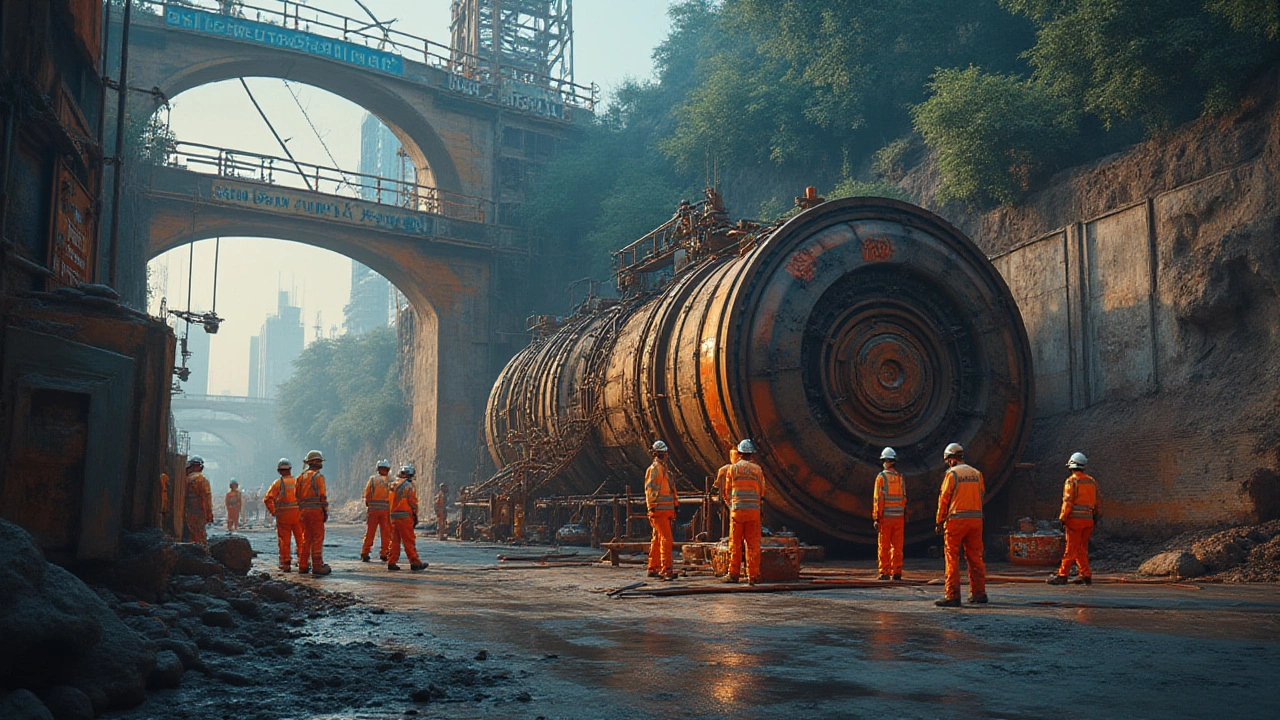Tunnel Engineering: What You Need to Know Today
When you think about roads, railways, or even subway rides, the real hero is often the tunnel hidden beneath the ground. Tunnel engineering isn’t just about digging a hole; it’s about planning, safety, and using the right tools to make sure a structure lasts for decades. In this guide we’ll walk through the key steps, common hurdles, and the tech that’s reshaping underground work.
Core Steps in a Tunnel Project
Every tunnel starts with a clear purpose. Are you moving cars, trains, water, or just creating a utility passage? Knowing the goal sets the size, shape, and lining requirements. Next comes the survey. Modern drones and laser scanners map the terrain faster than a crew with a tape measure could ever hope to. These 3‑D models help engineers spot weak rock zones, groundwater pockets, and potential surface impacts before the first shovel hits.
Once the site is mapped, the design phase kicks in. Engineers choose a method – cut‑and‑cover, tunnel boring machine (TBM), or the old‑school drill‑and‑blast – based on depth, soil type, and budget. They also decide on the support system: shotcrete, steel ribs, or segmental lining. The goal is to keep the surrounding ground stable while work proceeds.
Construction follows the plan, but it’s rarely a straight line. Real‑time monitoring with sensors tracks settlement, pressure, and gas levels. If something shifts, crews can adjust support or change excavation speed instantly. The final step is the finish – installing drainage, lighting, and ventilation for a safe, usable tunnel.
Big Challenges and How Tech Solves Them
Groundwater is a major headache. Water seepage can erode walls and damage equipment. Modern TBMs come with pressurized faces that keep water out while the machine moves forward. For especially tough rock, high‑pressure grouting fills cracks before excavation, reducing the risk of collapse.
Another issue is ventilation. Long tunnels need fresh air for workers and future users. Sensors now measure oxygen, carbon dioxide, and temperature continuously, feeding data to a control room that can ramp up fans automatically.
Cost overruns still plague many projects. That's where Building Information Modeling (BIM) steps in. BIM integrates design, scheduling, and cost data into a single platform. Teams can spot clashes – like a pipe running into a support beam – before they become expensive fixes.
Safety culture also matters. Wearable tech tracks worker fatigue, alerts them to high‑noise zones, and even signals when a worker steps into a hazardous area. These gadgets cut down on accidents and keep the project on track.
In India, tunnel engineering is booming thanks to metro expansions, highway tunnels, and hydro‑electric projects in the Himalayas. Local firms are adopting TBMs built in Europe and Japan, while also training engineers in advanced rock mechanics. Government incentives for smart infrastructure mean more budgets for cutting‑edge equipment and research.
To sum up, tunnel engineering blends careful planning, solid design, and rapid tech adoption. Whether you’re a contractor, a city planner, or just curious about how the underground world works, the right mix of data, tools, and safety practices makes every tunnel a success story.

Top Tunnel Construction Companies in India: Leaders in Tunnel Engineering
Uncover which companies are building tunnels in India, who leads the industry, and fascinating details behind tunnel engineering and infrastructure projects.
